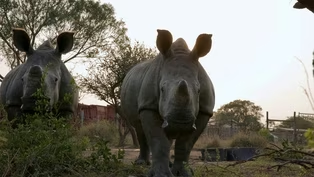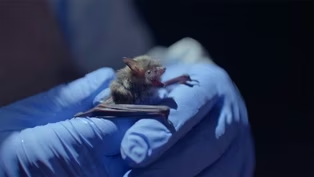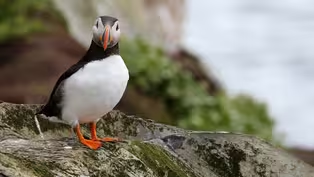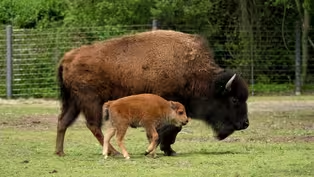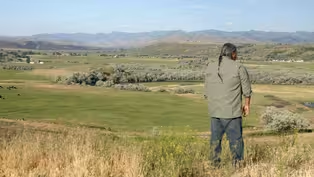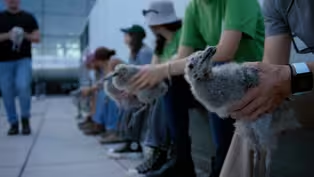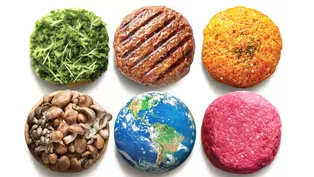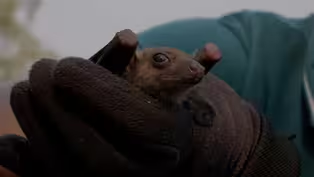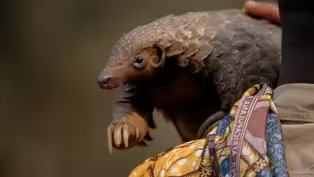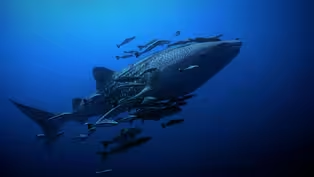
Coral Comeback | WILD HOPE
Special | 10m 47sVideo has Closed Captions
These coral reefs can beat the heat.
Coral reefs around the world are threatened by rising ocean temperatures, but hope is growing off the coast of Hawaii. There, researchers at the Coral Resilience Lab selectively breed corals to withstand ever-increasing amounts of heat stress.
Problems playing video? | Closed Captioning Feedback
Problems playing video? | Closed Captioning Feedback
Major support for NATURE is provided by The Arnhold Family in memory of Henry and Clarisse Arnhold, Sue and Edgar Wachenheim III, The Fairweather Foundation, Charles Rosenblum, Kathy Chiao and...

Coral Comeback | WILD HOPE
Special | 10m 47sVideo has Closed Captions
Coral reefs around the world are threatened by rising ocean temperatures, but hope is growing off the coast of Hawaii. There, researchers at the Coral Resilience Lab selectively breed corals to withstand ever-increasing amounts of heat stress.
Problems playing video? | Closed Captioning Feedback
How to Watch Nature
Nature is available to stream on pbs.org and the free PBS App, available on iPhone, Apple TV, Android TV, Android smartphones, Amazon Fire TV, Amazon Fire Tablet, Roku, Samsung Smart TV, and Vizio.
Buy Now
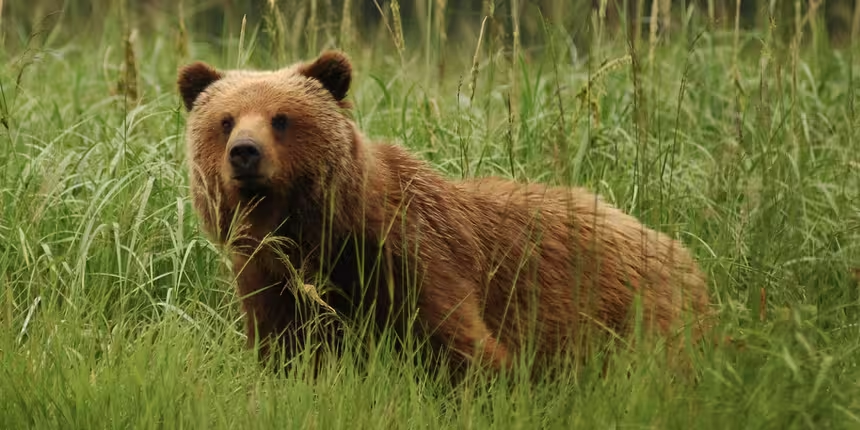
Explore More Ways to Watch
Bring the beauty and wonders of wildlife and natural history into your home with classic NATURE episodes.Providing Support for PBS.org
Learn Moreabout PBS online sponsorshipMore from This Collection
WILD HOPE is a new series of short films that highlights the intrepid changemakers who are restoring our wild places and sparking new hope for the future of our planet.
Video has Closed Captions
How does a densely populated nation like Singapore transform into a lush green oasis? (14m 51s)
Video has Closed Captions
For decades, rhinos have been the face of poaching. (16m 28s)
Video has Closed Captions
As a deadly fungus devastates North America’s bats, scientists are testing new ways to save them. (14m 47s)
Video has Closed Captions
In the Westman Islands, one community has banded together to save lost young puffins. (13m 15s)
Video has Closed Captions
Sixty million American bison once thundered across the prairies of North America. (18m 52s)
Reclaiming Bear River | WILD HOPE
Video has Closed Captions
The Bear River was once a lush area with wetlands, hot springs, and abundant wildlife. (17m 25s)
Building for Birds | WILD HOPE
Video has Closed Captions
Millions of migrating birds pass through our yards, but glass windows pose a deadly threat. (16m 3s)
Mission Impossible | WILD HOPE
Video has Closed Captions
Meet the genius behind the plant-based Impossible Burger. (39m 41s)
Pangolin Protectors | WILD HOPE
Video has Closed Captions
Due to the demand for their scales, pangolins are the most trafficked animal in the world. (12m 24s)
Way of the Elephants | WILD HOPE
Video has Closed Captions
Elephant migration corridors in India are a necessary thoroughfare for one of the largest animals. (15m 11s)
Whale Shark Homecoming | WILD HOPE
Video has Closed Captions
A renowned spiritual leader is inspiring fishermen to become guardians of the world’s biggest fish. (16m 49s)
Providing Support for PBS.org
Learn Moreabout PBS online sponsorship♪ KIRA: In our lab, we do two different ways of approaching coral restoration.
One is selective breeding.
You first have to identify which parents are thermally tolerant.
And we bring those into the lab and expose those to heat stress.
MADELEINE: And we can assess a coral's resilience under that stress test.
We're seeking out these resilient corals so that we have insurance in the reefs.
NARRATOR: Insurance against the devastating effect of climate change which is warming our oceans and killing off corals worldwide.
KIRA: If we prepare the reefs now for the future, then they have a better chance at surviving.
♪ I definitely have a personal relationship with coral.
I grew up with it.
Where we live in Hawaii, it protects our coastlines.
When I was younger, I used to snorkel at a spot called Hanauma Bay.
The fish would just come up to you and there was just these amazing corals.
It was very different back then than it is now.
The first bleaching event in Hawaii that people noticed was about 1996.
And then, in 2014 and 2015 we had back-to-back bleaching events and that's when corals got really, really stressed.
NARRATOR: Year after year, ocean temperatures are rising, and triggering a deadly phenomenon known as coral bleaching.
It's a main reason why half of all coral reefs worldwide have died since the 1950s.
♪ Kira Hughes and her team are trying to reverse that trend.
Working out of the Coral Resilience Lab at the University of Hawaii in Oahu.
♪ KIRA: We haven't just been looking at the threat to the corals, but we've also been looking at how they .. ♪ NARRATOR: Corals are small animals, soft-bodied polyps that attach themselves to underwater surfaces.
Many create stony skeletons around their bodies, which accumulate over time to form colonies that make up reefs.
♪ Over 25% of all marine life depends on corals habitat for protection or as a source of food.
♪ KIRA: Coral is a foundation species that all of the other animals and plants and algae build from.
Without coral, you lose a whole ecosystem.
NARRATOR: The current danger to corals comes from their symbiotic relationship with photosynthetic algae that live inside their cells.
KIRA: Typically, the algae gives the coral sugars to feed it over 90% of its food.
And then the animal, the coral, gives back its waste and the algae takes that up.
NARRATOR: When sudden, marine heat waves engulf coral, the algae produce corrosive chemicals that damage the corals cells.
The algae then leave the cells and the coral loses its color.
KIRA: When the algae releases outside of the coral, the coral no longer has that source of food.
♪ NARRATOR: Most starving corals will die within a few weeks, if they can't reacquire algae.
But against the odds, some corals survive these bleaching events.
These survivors are the focus of Kira and her team's work.
KIRA: In our lab, we do two different ways of approa.. One is selective breeding.
NARRATOR: The goal is to breed certain corals with each other to increase their tolerance to heat.
The work starts in the ocean where the biologists wait for corals that survive bleaching events to spawn.
KIRA: You first have to identify which parents are thermally tolerant, and you can do that by tagging them during a bleaching event.
We deem the ones that don't bleach as thermally tolerant.
We go out at night when they're spawning, and we can pick up those egg sperm bundles.
And we bring those into the lab and expose those to heat stress.
MADELEINE: Each tank is controlled by a computer.
And we can program it to be whatever temperature we want it.
We ramp the temperature up and then we bring it back down and we can assess a coral's resilience under that stress test.
Corals in Hawaii will readily bleach at around 28 degree.. NARRATOR: That's about 82 degrees Fahrenheit.
But some tanks push the corals even further, warming to temperatures that offshore waters are predicted to reach in the years ahead, as high as 90 degrees Fahrenheit or 32 degrees Celsius.
MADELEINE: We have a tank, which has temperatures that's pred.. so we can even see how the corals are gonna do in about 70 years from now.
NARRATOR: The corals that handle the heat best are selected for breeding.
Becoming parents to the next generation.
It takes five years and lots of care for them to mature to breeding age.
KIRA: We feel like we're their parents, you know, and now we're their grandparents.
So, we get really connected to these corals.
We watch them grow and we nurture them.
NARRATOR: The hope is that each successive selectively bred generation will become more resilient to heat stress.
KIRA: When you can increase that trait and enhance that heat tolerance over time in the genes, that's where you're gonna see the greatest difference that can make an impact on heat tolerance of the reef overall.
NARRATOR: The process takes time and many generations.
So the team takes a second track to accelerate their impact.
(man sings native Hawaiian song) KIRA: One of the big issues with coral restoration is scaling up.
So, we decided to invite community members from every island to join together in these efforts so that we can make a big enough impact.
(man sings native Hawaiian song) NARRATOR: Locals gather to help the lab make use of another source of heat resistant corals.
The team collects large fragments of wild coral that break off in the ocean, they're called "corals of opportunity".
(water splashing) ALIKA: Today we're in Maunalua Bay, Oahu, and we're gonna be collecting corals of opportunity from a sea table at about 35 feet of water.
(water splashes) ♪ KIRA: Corals of opportunity are corals that broke off from like a turtle coming by and nestling in the reef or a fish swinging its tail and knocking off one of the corals.
And we use that material because that way we're not taking pieces from the healthy and intact reef.
NARRATOR: Kira's team will test these pieces for heat tolerance before they plant them back on the reef.
It's a big job and requires a lot of local support.
KIRA: We have our core team members that dive down and they grab those corals of opportunity and bring them to the surface.
And then we have paddlers from Hui Nalu Canoe Club, and they go out and they bring in the corals in these big tubs.
And then we collect them from them.
MADELEINE: So today, we've invited members from t.. to come help us fragment our corals to be stress tested.
We're taking these from the nursery table that's out in the bay.
Volunteers will take a photo of the coral, they will identify the species of the coral, and assess the health of the coral.
(sawing through coral pieces) NARRATOR: Small pieces are cut off .. and bonded to a plug.
The team can then safely transport them to the lab for testing to see which ones are the most heat-tolerant.
KIRA: We put those through about a three weeklong stress test.
The ones that don't bleach at all or take a while to bleach, those will be the ones that we prepare to be out planted back on the reef.
♪ NARRATOR: Today, these naturally resilient corals of opportunity aren't the only ones heading back out to the reef.
For the first time, juveniles bred in the lab, the next generation of heat resistant corals, are joining them.
KIRA: What's really exciting this year, we're actually gonna outplant selectively bred corals for the very first time.
With known thermally tolerant corals in the reef, they can make those reefs more resilient.
And that's our hope.
♪ HANALEI: I think any restoration and trying to bring corals back is super important.
I got an underwater drill and basically we use this to drill a hole that could fit our coral plugs in there.
KIRA: I'm adding on the tip for the glue.
It's a two-part epoxy, so we can stick the coral in there and it'll stay solid.
(water splashing) We'll see if they can actually withstand this temperature stress that's coming.
NARRATOR: Success won't solve the climate crisis, but for corals it could be a critical lifeline as ocean temperatures rise.
KIRA: What we've learned so far is that thermal tolerance is definitely a trait that can be inherited and that's really exciting because that shows how we can continue to improve thermal tolerance over time.
We are gonna keep doing what we can to keep up with climate change and try to provide the best future for these corals that we can.
♪ ♪ ♪ ♪

- Science and Nature

Explore scientific discoveries on television's most acclaimed science documentary series.













Support for PBS provided by:
Major support for NATURE is provided by The Arnhold Family in memory of Henry and Clarisse Arnhold, Sue and Edgar Wachenheim III, The Fairweather Foundation, Charles Rosenblum, Kathy Chiao and...

